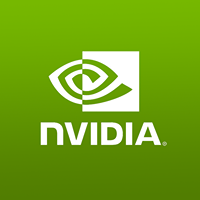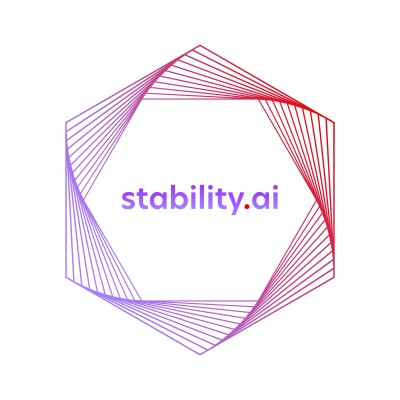The AI Arms Race: DeepSeek and Tencent Lead the Charge in Image Generation
January 30, 2025, 4:29 am
In the ever-evolving landscape of artificial intelligence, two companies are making waves: DeepSeek and Tencent. Both have unveiled groundbreaking models that push the boundaries of image generation. Their innovations are not just technical feats; they represent a shift in the AI narrative. The race is on, and the stakes are high.
DeepSeek recently launched its Janus-Pro-7B model, claiming it outperforms established giants like OpenAI and Stability AI. This Chinese start-up is not just another player; it’s a contender. The Janus-Pro-7B model is an upgrade from its predecessor, Janus, which debuted late last year. DeepSeek’s technical report boasts that the new model excels in generating images from text prompts, surpassing Dall-E 3 and Stable Diffusion in benchmark tests.
The secret sauce? A blend of enhanced training processes, superior data quality, and an impressive model size. With seven billion parameters, Janus-Pro-7B delivers visually stunning and stable images. It’s like a painter with a larger canvas and better brushes. The model incorporates 72 million high-quality synthetic images, harmonizing them with real-world data. The result? Richer details and improved image stability.
But the impact of DeepSeek’s announcement rippled through the tech world. Stocks of major players like Nvidia and Oracle took a hit. The message was clear: a new contender has emerged, and it’s shaking the foundations of the industry. This is a wake-up call for the U.S. tech sector. The dominance of American companies is being challenged, and the implications are profound.
Meanwhile, Tencent is not sitting idle. The tech giant has rolled out Hunyuan3D 2.0, a generative AI system that transforms 2D images into detailed 3D objects. This model operates with two specialized components. One handles the basic 3D shapes, while the other adds realistic textures. It’s a symphony of technology, each part playing its role to create a harmonious output.
Hunyuan3D 2.0 employs Hunyuan3D-DiT, a diffusion transformer model. This model captures the essential forms of objects and compresses them into a manageable format. Once it grasps the basic structure, it generates 3D shapes that mirror the input image. The texturing process is equally sophisticated. Hunyuan3D-Paint considers surface angles and positions, ensuring textures appear natural from any viewpoint. It even removes lighting effects from the original image, allowing for consistent texture performance under various lighting conditions.
The improvements in Hunyuan3D 2.0 are significant. The model now captures finer details, such as edges and corners, leading to better facial reproductions and surface patterns. The results are clean, devoid of the holes and errors that often plague 3D generation. In tests, Hunyuan3D 2.0 outshines its competitors in form generation, texturing, and overall model quality. One standout example showcases the system’s ability to reproduce readable text on a sign held by a penguin model. It’s a testament to the precision of this technology.
Tencent’s push for accessibility is noteworthy. The launch of Hunyuan3D-Studio—a web-based toolkit for creating 3D models—opens doors for users. They can convert sketches into 3D models, simplify complex projects, and even animate characters. However, access requires a WeChat, QQ, or Chinese phone number, which may limit its reach.
Both DeepSeek and Tencent are part of a larger narrative. As they innovate, they challenge the status quo. The tech giants of the West must take notice. The landscape is shifting, and competition is intensifying. The rise of these Chinese companies signals a new era in AI development.
The implications extend beyond technology. The U.S. tech industry has long enjoyed a dominant position. However, as companies like DeepSeek and Tencent emerge, the balance of power is in flux. This shift could lead to increased collaboration and competition, fostering innovation on a global scale.
In this race, the winners will be those who adapt quickly. The ability to harness AI for creative purposes is becoming a key differentiator. Companies must invest in research and development to keep pace. The future of image generation lies in the hands of those willing to push boundaries.
As we look ahead, the question remains: who will lead the charge? Will it be the established giants, or will new players redefine the landscape? The answer is uncertain, but one thing is clear: the AI arms race is just beginning. The next few years will be crucial. Innovations will come fast and furious. Companies must be ready to pivot, adapt, and innovate.
In conclusion, the emergence of DeepSeek and Tencent is a clarion call for the tech industry. The competition is heating up, and the implications are vast. As these companies continue to push the envelope, the world watches. The future of AI is bright, but it’s also unpredictable. Only time will tell who will emerge victorious in this high-stakes game.
DeepSeek recently launched its Janus-Pro-7B model, claiming it outperforms established giants like OpenAI and Stability AI. This Chinese start-up is not just another player; it’s a contender. The Janus-Pro-7B model is an upgrade from its predecessor, Janus, which debuted late last year. DeepSeek’s technical report boasts that the new model excels in generating images from text prompts, surpassing Dall-E 3 and Stable Diffusion in benchmark tests.
The secret sauce? A blend of enhanced training processes, superior data quality, and an impressive model size. With seven billion parameters, Janus-Pro-7B delivers visually stunning and stable images. It’s like a painter with a larger canvas and better brushes. The model incorporates 72 million high-quality synthetic images, harmonizing them with real-world data. The result? Richer details and improved image stability.
But the impact of DeepSeek’s announcement rippled through the tech world. Stocks of major players like Nvidia and Oracle took a hit. The message was clear: a new contender has emerged, and it’s shaking the foundations of the industry. This is a wake-up call for the U.S. tech sector. The dominance of American companies is being challenged, and the implications are profound.
Meanwhile, Tencent is not sitting idle. The tech giant has rolled out Hunyuan3D 2.0, a generative AI system that transforms 2D images into detailed 3D objects. This model operates with two specialized components. One handles the basic 3D shapes, while the other adds realistic textures. It’s a symphony of technology, each part playing its role to create a harmonious output.
Hunyuan3D 2.0 employs Hunyuan3D-DiT, a diffusion transformer model. This model captures the essential forms of objects and compresses them into a manageable format. Once it grasps the basic structure, it generates 3D shapes that mirror the input image. The texturing process is equally sophisticated. Hunyuan3D-Paint considers surface angles and positions, ensuring textures appear natural from any viewpoint. It even removes lighting effects from the original image, allowing for consistent texture performance under various lighting conditions.
The improvements in Hunyuan3D 2.0 are significant. The model now captures finer details, such as edges and corners, leading to better facial reproductions and surface patterns. The results are clean, devoid of the holes and errors that often plague 3D generation. In tests, Hunyuan3D 2.0 outshines its competitors in form generation, texturing, and overall model quality. One standout example showcases the system’s ability to reproduce readable text on a sign held by a penguin model. It’s a testament to the precision of this technology.
Tencent’s push for accessibility is noteworthy. The launch of Hunyuan3D-Studio—a web-based toolkit for creating 3D models—opens doors for users. They can convert sketches into 3D models, simplify complex projects, and even animate characters. However, access requires a WeChat, QQ, or Chinese phone number, which may limit its reach.
Both DeepSeek and Tencent are part of a larger narrative. As they innovate, they challenge the status quo. The tech giants of the West must take notice. The landscape is shifting, and competition is intensifying. The rise of these Chinese companies signals a new era in AI development.
The implications extend beyond technology. The U.S. tech industry has long enjoyed a dominant position. However, as companies like DeepSeek and Tencent emerge, the balance of power is in flux. This shift could lead to increased collaboration and competition, fostering innovation on a global scale.
In this race, the winners will be those who adapt quickly. The ability to harness AI for creative purposes is becoming a key differentiator. Companies must invest in research and development to keep pace. The future of image generation lies in the hands of those willing to push boundaries.
As we look ahead, the question remains: who will lead the charge? Will it be the established giants, or will new players redefine the landscape? The answer is uncertain, but one thing is clear: the AI arms race is just beginning. The next few years will be crucial. Innovations will come fast and furious. Companies must be ready to pivot, adapt, and innovate.
In conclusion, the emergence of DeepSeek and Tencent is a clarion call for the tech industry. The competition is heating up, and the implications are vast. As these companies continue to push the envelope, the world watches. The future of AI is bright, but it’s also unpredictable. Only time will tell who will emerge victorious in this high-stakes game.

